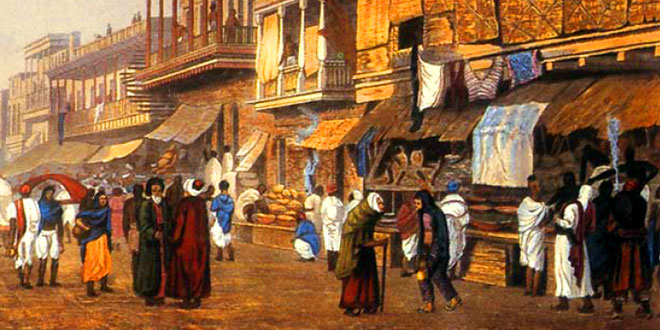Question: Name two distinct schools of music of North and South India. How did they develop in Medieval India? Differentiate between the two types.
Answer: Two schools of music of North and South India are Gharanas and Carnatic School of music respectively.
In Gwalior, Swami Haridas, Tansen’s guru, was part of Raja Mansingh Tomar’s court. He specialised in the Dhrupad style of singing. Distinct styles of music also developed in Lucknow, Benaras and Patiala. Hindustani music was influenced by Persian and Turkish music. Prominent composers of Hindustani music: Tansen, Amir Khusrau and Swami Haridas. Hindustani Classical music are Dhrupad, Khayal, Qawwali.
In the South, the Carnatic School of music flourished during the rule of Vijayanagara Empire. It was relatively unaffected by Persian influence. This growth was led by Vyasaraja, Purandara Dasa and Kanakadasa. Purandara Dasa was also known as the Sangeeta Pitamah of Carnatic music. He laid out the basic rules for teaching Carnatic music.
Question: Name one medieval work of literature each written in Bengali, Sanskrit and Persian.
Answer: Bengali – Babu Chandidas (Srikrishna Kirtan)
Sanskrit – Jayadeva’s Gita Govinda (12th Century)
Persian – Akbarnama (Abdul Fazl)
Question: Write a note on Medieval Bengali architecture.
Answer: The medieval architecture of Bengal was very different from that of the rest of India.
- Both mosques and temples were built here during this period. But what was unique about Medieval Bengali architecture was the extensive use of terracotta and burnt bricks as the building material, and the inverted boat shaped roof of the temples.
- The 16th century Jor Bangla and stepped Rasmancha are excellent examples of temples of this style. They are covered by richly carved terracotta tiles that depict scenes from the Hindu epics.
- The Adina Masjid in the Pandua was the largest mosque of its time in the subcontinent. It was built in 1374 CE by Sultan Sikander Shah of the Ilyas Shahi Dynasty. Inscriptions from four different chapters of the Qurancan be found on it.
Question: How did vernacular languages emerge in North India.
Answer: A striking feature of the medieval period was the emergence of languages belonging to various regions. In course of time, many literary works were composed in these languages.
- Languages like Bengali and Marathi emerged in the east and west of India respectively. They were spoken by common people.
- Bhakti Saints such as Chaitanya Mahaprabhu and Tukaram preached in languages spoken by the local people.
Question: Which language was known as the ‘camp language’? Why?
Answer: Persian and Hindi fused to give birth to a new language – Urdu. The word “Urdu” means camp. The new language was a “Camp Language” because it emerged in the camp of soldiers.
 Class Notes NCERT Solutions for CBSE Students
Class Notes NCERT Solutions for CBSE Students




Very bad I wanted explanation for this chapter